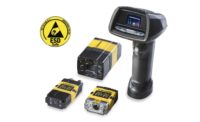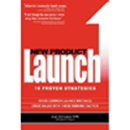![]()
Rebagged Candy Rates with Readers
by Renee M. Covino
The overwhelming majority of respondents in Confectioner’s exclusive
survey gave high marks to general-line peg-bag candy—but
they’re ready to add in even more value and higher quality. Are
vendors listening?
Are they as clear a winner
as the packaging they’re rebagged in? General Line Candy/Peg Bag
(GLC/PB) programs appear popular. For the past couple of years, pegged
candy sections seem to have multiplied like rabbits in many retail
channels.
But just to put some numbers behind those leaping
observations, Confectioner conducted an exclusive industry survey this summer, and
found that of the nearly 85 percent of retail/wholesale respondents that
currently have a GLC/PB program, more than 95 percent feel that
it’s an “important contributor” to candy category sales
and profits.
While it has become increasingly popular for branded
manufacturers to peg-package vertical lines of their branded candies, that
is not what’s being reported on here. A distinction was made to our
survey respondents that for the purposes of this study, general line/peg
bag candy is candy that is rebagged by various rebagging companies, then
later sold to retailers as a program. Peg bags within such programs often
include unbranded general line candy, such as orange slices, jelly beans,
etc, but also often contain rebagged branded candies, such as Tootsie
Rolls, Goetze’s Caramel Creams, etc.
“The unbranded program is definitely an
important candy section—comprising about 30 percent of our candy
dollar sales,” stated a convenience store buyer.
More than 40 percent of respondents with such a
program maintain a GLC/PB set with more than 40 SKUs (despite the fact that
branded peg candy sections are growing right alongside it); more than 20
percent stock between 20 to 30 different non-branded items.
But no matter the SKU count, retailers and wholesalers
are getting more discriminating with their rebagged lines. “In
general, the peg segment of candy is becoming very overcrowded,”
observed a category manager from a regional drug chain. “So
we’re weeding out old SKUs and bringing in newer flavors. For
instance, our pixie sticks are dying, so maybe we’ll replace them
with a sour peach gummies or some other popular gummies.”
One wholesaler is looking to expand certain nostalgic
or mainstay items. “Jelly beans are making a comeback,” he
said. “And licorice is doing very well because customers tend to know
it’s fat-free.” Another good SKU assortment is no-sugar and
low-carb lines, he revealed. “It didn’t work when we tried it
four or five years ago, but now there’s much more demand for
it.”
A supermarket buyer agreed with that because of the
success of low-sugar candies from the name brands. “Anything that
directly compares with national brands is a hit for us in rebagged candy.
We’re putting a plan-o-gram together with the branded and non-branded
peg-bag SKUs side-by-side, so consumers can make direct comparisons.”
So what are the key factors for an overall successful
program? According to survey tabulations, the two “Vs” have
it—“variety” and “good value” scored
extremely high with our readers; more than 81 percent and 80 percent,
respectively, of respondents rated them as such (checking more than one
response was permitted).
Upon follow-up, it was revealed that for several respondents,
variety and value translated to a private-label program—either they wanted
one or they were fine-tuning one.
“We would love to see our own store name on these bags,” said one convenience/gas store buyer.
“We would love to see our own store name on these bags,” said one convenience/gas store buyer.
A drug store buyer, who already works with a bag
filler on a private label line of general line candy, is currently in the
process of making the packaging “tighter and shorter” so the
chain can make room for more innovations that copy the branded peg candy.
“If a brand comes out with a new exciting
flavor, we want to follow along in our private label line—typically a
few months later,” she said. “For instance, there have been a
lot of innovations in the sour category, so we need to look at that, but
also not alienate our older consumers. After all, we are a drug store with
lots of prescription consumers.”
Perhaps the popularity of dollar stores has partly dictated
the category’s “most valuable” price points of late—either
two for $1 (more than 62 percent of respondents indicated they have this one)
or 99 cents (nearly 59 percent of respondents checked off this one as well).
“Ninety-nine cents is the magic number,” said the wholesale distributor.
“Ninety-nine cents is the magic number,” said the wholesale distributor.
“We’re going to stay at 99 cents as much
as possible,” added the drugstore buyer. “It’s a good
price point and a good mover for our pegs.”
A convenience store buyer couldn’t agree more.
“I’m not into raising price points over the dollar mark in this
category,” he said. “Even when we get marginal price increases
from the manufacturer, we often eat them.”
There is one exception to this—“if we
added chocolate into the line,” he revealed. Apparently, many
respondents agree that while good value plays an important role in the
success of the category, higher quality could also factor into a value
equation—but at a higher price point than a dollar.
“Probably if we introduced some chocolate into
the general peg line, it wold make it even better,” explained that
same drugstore buyer. “Then I would have a chocolate level and a
non-chocolate level—one at a dollar and one at $1.29.”
A supermarket buyer would go even higher than that.
“We would upgrade the size of the bag and compare it to branded
chocolate peg bags at $2.99,” he maintained. “We think a good
price point in our line would be around $1.89.”
It all depends on the quality of the chocolate,
according to a convenience store category manager. “We have chocolate
in our line, but we’d like to improve it—the quality of the
candy. We also see going with more premium sugar items, too, such as candy
with extra vanilla or maple clusters. We would then put those at the same
price point as our chocolate line.” n





